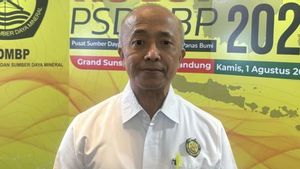The news of the bankruptcy of PT Sri Rejeki Isman Tbk. (Sritex) has surprised many people. The downfall of this large textile company is not just a company problem, but a sign of a crisis lurking in the national textile industry. Sritex, which recorded debts of up to 21 trillion rupiah, is not only squeezed by internal problems or uncontrollable financial burdens, but also by structural pressures that are crushing the national textile sector—a sector that is one of the pillars of exports and employment absorption in Indonesia.
Sritex, a supplier of fabrics and uniforms for local and international markets, employs thousands of employees who are now facing uncertainty. Sritex President Director, Iwan Setiawan Lukminto, stated that despite bankruptcy, the company's operations are still running. However, behind this promise, heavy obstacles lie ahead: mounting debt, tight global competition, and domestic regulations that are detrimental to domestic producers. This combination is hitting the competitiveness of local producers like Sritex.
Sritex, the textile company said to be the largest in Southeast Asia, is not only a provider of jobs for its employees, but also supports many small and medium businesses in the textile industry supply chain. As reported in various media, it was recorded that there were around 14,112 Sritex employees who were directly affected, 50,000 employees in the Sritex Group, and thousands of MSMEs whose businesses depend on this company. This situation prompted the government under the leadership of President Prabowo Subianto to consider the bailout option as an effort to maintain the continuity of Sritex's operations and prevent a wave of massive layoffs.
Data from BPS and the Ministry of Industry show that Indonesia's apparel export volume in 2022 reached USD 9.58 billion, the highest since 2018. However, in early 2023, exports experienced a significant decline of 22.1% (YoY), to USD 2.00 billion. Meanwhile, the value of Indonesia's apparel imports in 2022 was recorded at USD 127.36 billion, with a decline of 13.51% in 2023 (January-March).
According to Iwan Setiawan Lukminto, the import policy through Permendag Number 8 has had a significant impact because it disrupts the production operations and textile and textile product industries. Because the regulation paved the way for a flood of textile products from abroad, especially Asian countries such as China and Vietnam. These products are sold at cheaper prices and flood the domestic market, causing local products such as Sritex to have difficulty competing. In this situation, local products are increasingly being squeezed out in their own market.
Meanwhile, the Chairman of KSPI, Said Iqbal, said that mismanagement was also the cause of Sritex's worsening condition. However, this blame cannot be placed on management alone without considering the role of less supportive regulations. This situation shows the need for stronger protective and proactive policies to support the domestic industry to be more competitive, including anti-dumping policies and effective financial support.
At the global level, competition in the textile sector is getting tighter. Countries such as Bangladesh and Vietnam are Indonesia's main competitors because they are able to produce textiles at lower costs. Reports from Bank Indonesia and BPS show that Indonesian textile exports continue to decline because products from these countries are cheaper and more competitive. Sritex faces major challenges in the international market that prioritizes efficiency and low prices, while production costs in Indonesia tend to be high.
The government, through the Ministry of Trade, has opened up the option of bailout funds to maintain Sritex's operations and prevent a wave of layoffs. However, bailout funds are not enough if they are not accompanied by improvements in governance and local industry protection policies. Without strong anti-dumping and protection policies, the national textile industry will only face the same threats over and over again.
Support in the form of tax incentives, production cost cuts, and reductions in raw material import costs can help the sector survive. In addition, efficiency and increased innovation must be the focus to strengthen the competitiveness of textile products in the global market.
The bankruptcy of Sritex is a strong warning to the industrial ecosystem. If the right solution is not taken immediately, this sector will be further depressed and lose its competitiveness. Resolving this crisis must be interpreted as a step to maintain the national textile industry while avoiding wider deindustrialization. Saving Sritex means saving the local textile industry and the economic sustainability of thousands of workers and MSMEs who depend on it.
The decision is now in the hands of the government and all stakeholders. Will we save and reform the textile industry or let it slump under global market pressure? Policies that support the Indonesian textile industry will open up opportunities to rise from the slump. However, without concrete action, the story of Sritex's bankruptcy could be the beginning of a bigger crisis in the future. (iqbal irsyad)
The English, Chinese, Japanese, Arabic, and French versions are automatically generated by the AI. So there may still be inaccuracies in translating, please always see Indonesian as our main language. (system supported by DigitalSiber.id)













